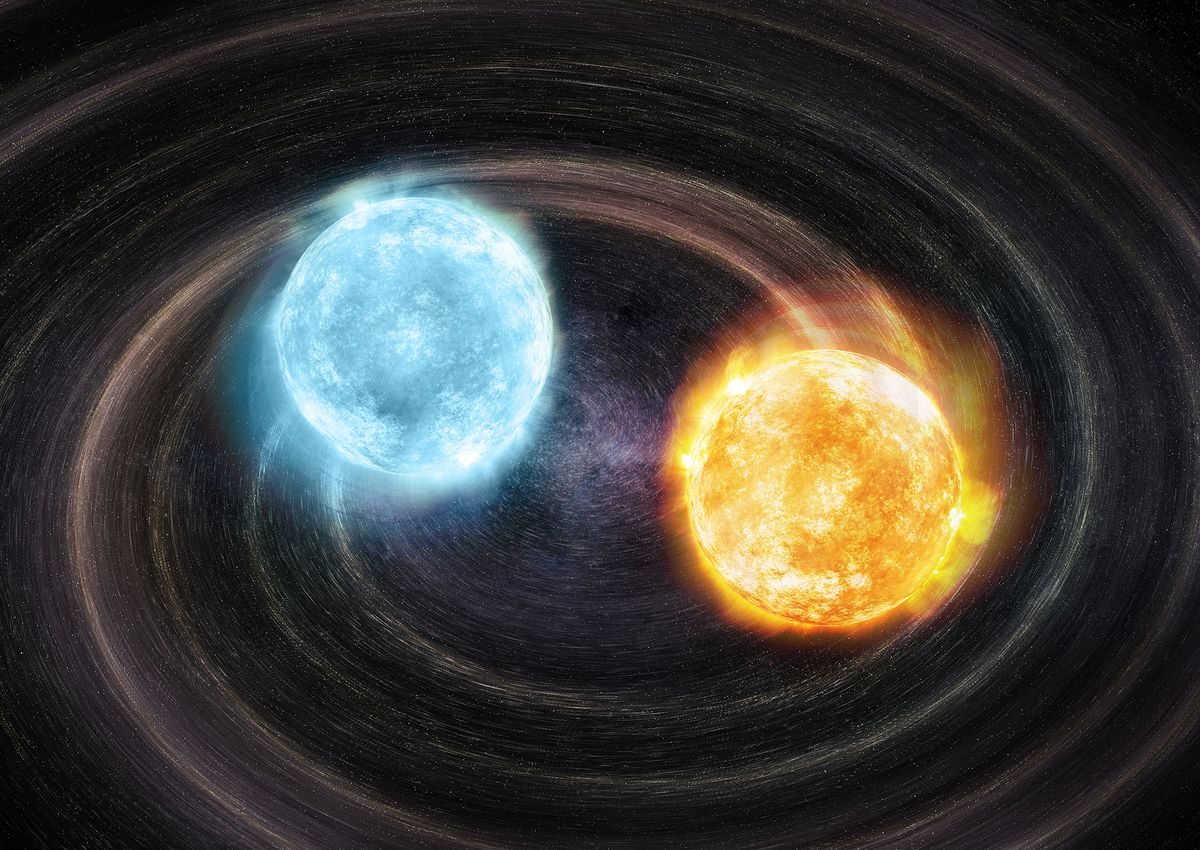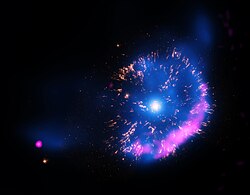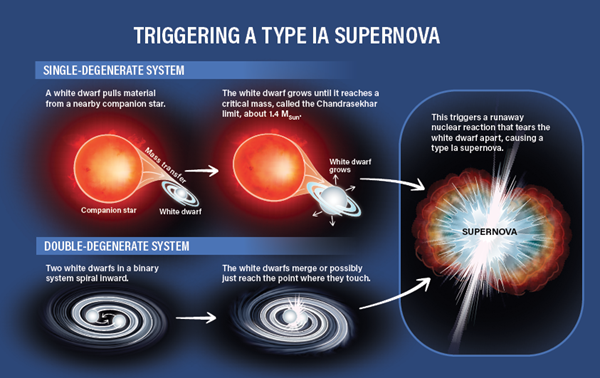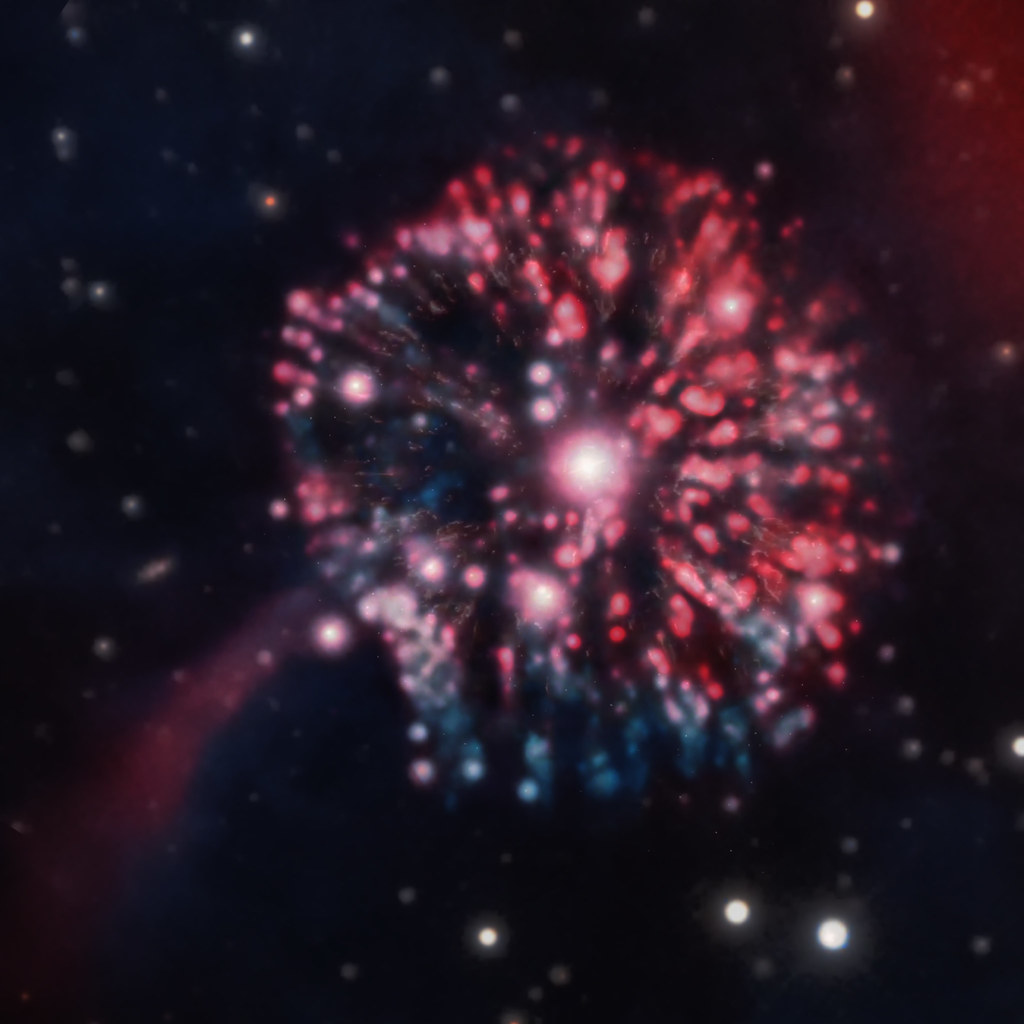I don't automatically comment on planetary nebula images, because I don't have a handle on their colors. I trust that I know the colors of stars, because I made a great effort to observe all sorts of (reasonably bright) stars to assess their colors, but I never managed to detect color in the few planetary nebulas I observed. And, to be honest, Hubble ruined the planetary nebulas for me!

How can the colors of planetary nebulas be so impossibly different from one another? Help!!!

So, because I never managed to spot any color in the planetaries that I observed, and because of the crazily colored pictures of planetaries by Hubble, I lost interest in these stellar shrouds. Now I mostly think they are sad - they are dirges for dead stars!
Okay, but who can resist today's amazing APOD???

It looks crazy!! It looks pretty wonderful! It looks like a cosmic flower growing out of planetary nebula soil!
GK Per: Nova and Planetary Nebula
Image Credit & Copyright: Deep Sky Collective
A cosmic flower growing out of a planetary nebula!
The planetary nebula in the APOD - the big elongated red and blue thing - looks like a typical planetary nebula. It's red from hydrogen alpha and blue from OIII. (Yes, but is OIII really as blue as that?)

Whatever! The planetary nebula formed as the former red giant that is now a white dwarf cast off its swollen atmosphere and bared its scorchingly hot tiny innards, its compact core. The terrifically hot core blasted its own cast-off atmosphere with relentless ultraviolet radiation, ionizing these gas clouds and making them glow red and blue (green?), thus forming a planetary nebula.
Planetary nebula PK 164+31.1. This is a typical planetary nebula.
This is what GK Per looked like (more or less) before it became nova.
Credit: Eric Smith
But we are not done yet! The white dwarf had a companion, and the two of them lived cosily close to one another even before one of them became a white dwarf.
Okay, no! Not this close! I just wanted you to get an idea.
Anyway. One of the stars became a red giant, and then it cast off its atmosphere and became a white dwarf (with a planetary nebula). Yes, but then the other star entered its red gianthood too and started to swell, and then the white dwarf started sucking gas from its swollen companion, forming an accretion disk around itself!
This is not a perfect illustration, because the big star is blue, and we are told by the caption that the big star is Sun-like. (Really? So blue?)
In the case of GK Persei, the star that is the - well, "star" - of today's APOD, the "big star", the donor star, is a red giant. But the white dwarf is certainly sucking matter from its red giant companion and forming an accretion disk around itself.
What happens next?
In one of the links in the caption of today's APOD, we are told this about the accretion disk swirling around the white dwarf:
As it loses angular momentum, the material in the disk slowly drifts inward and accretes onto the surface of the white dwarf.
An envelope or "ocean" of hydrogen-rich material builds up on the white dwarf surface.



The intense heat and pressure at the base of this envelope leads to a thermonuclear explosion as hydrogen is burned to helium. The explosion blows off the outer layers of the envelope. This event is the observed classical nova outburst which generally lasts for tens to hundreds of days.
It is this thermonuclear explosion from 1901 that formed the Fireworks Nebula, which is the "flower" inside the planetary nebula in today's APOD!

Do note that when there is a nova, the white dwarf whose surface layer explodes
survives the explosion.

Not so with supernovas. And it's fascinating to think that supernovas type Ia form in much the same way as cataclysmic novas like GK Per. The difference is that so much matter builds up on the white dwarf's surface that the white dwarf reaches its Chandrasekhar limit, the maximum mass of a white dwarf before the electron degeneracy that prevents the white dwarf from collapsing buckles under, and a runaway flare of uncontrolled fusion tears the white dwarf apart in one of the brightest explosions of the Universe.
I guess most supernovas type Ia also grow out of a planetary nebula, but the planetary nebula surrounding them is completely overwhelmed by the unbelievable force of the supernova explosion.
That's a big big flower indeed!!!

Ann
 GK Per: Nova and Planetary Nebula
GK Per: Nova and Planetary Nebula








